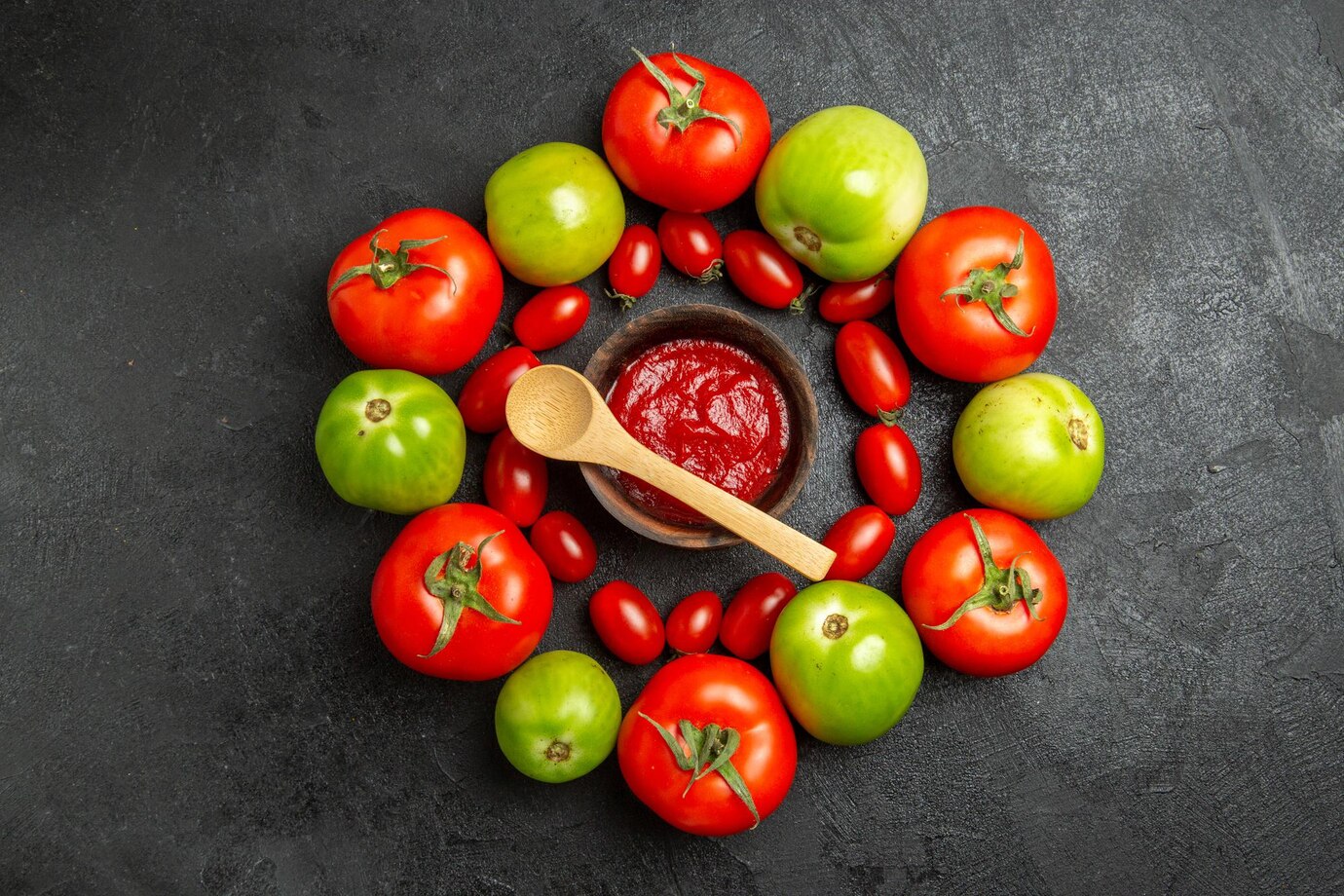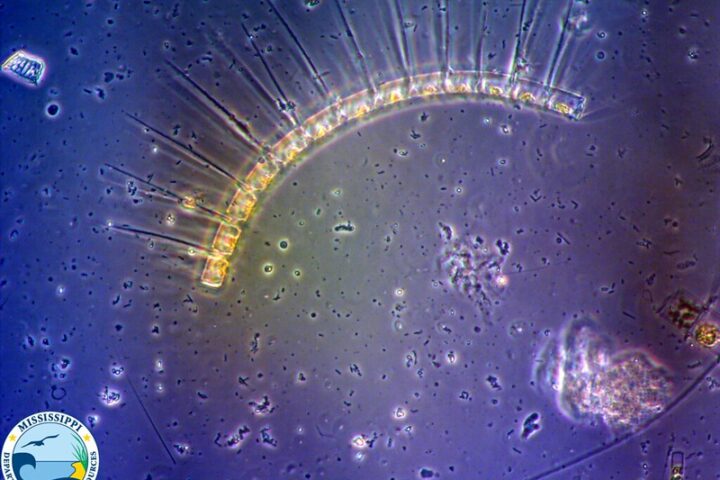Source: Freepik_Top view cherry red and green tomatoes around a bowl with ketchup and a wooden spoon on dark ground
What today is a natural food constituent in almost every country of the world, the tomato was considered a toxic fruit. That juicy, red, dear-to-heart and healthy globe has an interesting history. The tomato is native to the Andean region of South America, with its discovery dating back to pre-Columbian times. The Aztecs and Incas consumed tomatoes with their food and even used them within salsas and sauces.
This food, tomato, was found in the Americas only during the 16th century, when Spanish conquistadors had already arrived. Intrigued by it, they shipped off tomato seeds back to Europe. The road of the tomato to cultural acceptance, however, was anything but smooth. Suspicion and distrust greeted the tomato in Europe. It had a similar appearance to deadly nightshade plants, so many claimed it was poisonous. This erroneous belief went even further with the fact that tomatoes were kind of acidic; if eaten from pewter plates, this acid could leach lead from the plate into the food, resulting in being poisoned by it. Again, the tomato was blamed for these bad circumstances, and so its reputation as a poison cemented itself.
Despite all of this, it was impossible to ignore the tomato’s potential as a food. A few brave souls began to experiment on it, and so through time such myths began to fade away. The development of porcelain dishes, which would not react at all to the acidity of the tomato, lessened the risk of lead poisoning. As the late 18th and early 19th centuries turned over and the tomato started being seriously considered as a food, new varieties that imparted depth of flavor and proper texture added to its appeal. The tomato’s ability to almost behave like other vegetables, its nutritive value, and its ability to make other ingredients “better” in the kitchen made it increasingly desirable.
By the mid-19th century, it had conquered European and North American taste buds. It became an integral ingredient of Italian cuisine and the foundation for the legendary tomato sauce. It was another Italian product that propelled the tomato onto the world food scene: pizza. But that was still not the end; it went on to conquer Asia, Africa, and the rest of the world, fusing with diverse cultural conditions and forms of cuisine.
Apart from its culinary value, tomato is dense in nutrients, very rich in vitamins, minerals, and antioxidants. It is said to have a reduced risk of heart diseases, cancer, and stroke. Lycopene, a carotenoid pigment in tomatoes, has been associated with many health benefits. The contribution of tomatoes reaches the skin, eyes, and immunity.
The tomato industry has grown to become an economic force in the world. Acres run into millions under tomato cultivation, providing employment opportunities. Technological advancements increased the yield of tomatoes and the efficiency thereof. However, changes in climate, pests, and consumer tastes are some of the challenges that the industry faces. It is the adjustment in the midst of these changes that is the challenge the industry has to counter to remain successful.
From Humble Beginnings to Global Culinary Stardom: The Story of the Tomato—A Testimony to Human Invention, Cultural Exchange, and Agriculture. The place that tomato holds in our diets is likely to endure as our understanding of its nutritional value deepens and its culinary potential increases.
The Tomato: A Global Culinary and Economic Powerhouse
From botanical curiosity to economic mainstay, the career path of the tomato ably reflects human ingenuity and adaptability. It is not only about culinary and nutritional importance; the tomato has assumed a most prominent status for global agriculture and trade.
A lot has changed in the way tomatoes are grown due to technological advancements that totally changed the culture of tomato growing. These production systems have been fine-tuned through precision agriculture making use of data analytics and automation to maximize inputs and yields. This has offered the possibilities of managing the environment for greenhouse growing, which means opening up more extensive production periods. Still, there are a lot of problems. There is a risk to tomato crops in the unpredictable weather patterns due to climate change. Weather, whether extremes of drought, floods, or heat waves, can wipe out harvests. Pests and diseases are perennial challenges that tomato farmers face and are still areas requiring more research and development of resistant varieties.
The described challenges above make sustainable farming practices in vogue. Organic cultivation that maintains the health of the soil and biodiversity has become very popular. Also, consumable water and chemical inputs ought to be kept at a minimal level for environmental sustainability. Notably, varieties of tomatoes that resist diseases and are rich in nutritional value need to be genetically modified.
The tomato industry basically consists of farmers, processors, distributors, and retailers. Food safety and quality are a main concern at every process level within this supply chain. Traceability programs have been established to trace tomatoes from the farm to the consumer to respond fast in the event that contamination is detected.
Consumers’ preferences are also a factor that has influenced the industry for tomatoes. The demand for locally grown, fresh tomatoes has created a rise for farmers’ markets and community agriculture programs. Interest in specialty tomatoes is also increasing—things like heirloom varieties and organic options, which allow for differentiation in the marketplace for discerning palates.
But it also has a far greater impact on the economy. The tomato supports a vast processing industry that turns out tomato paste, ketchup, and other products that are powerful sources of employment and income for national economies. Tomatoes are likewise one of the basic materials for many dishes in restaurant menus from across the world, making a big contribution to the foodservice industry.
However, in the tomato sector itself, many economic challenges are presented. Prices fluctuate constantly, while trade tariffs and global economic parameters may enter to make a dent in these industries’ profitability. There is rampant labor shortage in the regions, which affects production and harvest.
Industry will continue to change and diversify as the status of the situation dictates it. Innovation in new markets of tomato produce—value-added and functional foods—can offer prospects for growth. Investments in long-term sustainability carry with them the requirement for research and development to meet the up-coming challenges of climate change and resistance to pesticides and other chemicals.
This is what makes the story of the tomato, from botanical enigma to worldwide economic powerhouse, so remarkable. How its influence extends far beyond what is on the plate to affect agricultural, trading, and economic concerns on a global scale. Just as consumer preferences and global challenges are changing, so too must the tomato industry change—not for survival, but for enduring success.
Sources:
- https://indianexpress.com/article/express-sunday-eye/tomato-prices-history-india-poison-apple-wilayati-baingan-8837222/#:~:text=Tomatoes%20did%20not%20have%20an,a%20culprit%20for%20lead%20poisoning.
- https://www.fao.org/newsroom/story/The-journey-from-poisonous-curiosity-to-popular-ingredient/en
- https://www.mightytravels.com/2024/07/from-feared-fruit-to-culinary-icon-tracing-the-tomatos-journey-in-italian-cuisine/
- https://www.gardenamerica.com/tomato-history-aztec-origins-global-culinary-icon/















